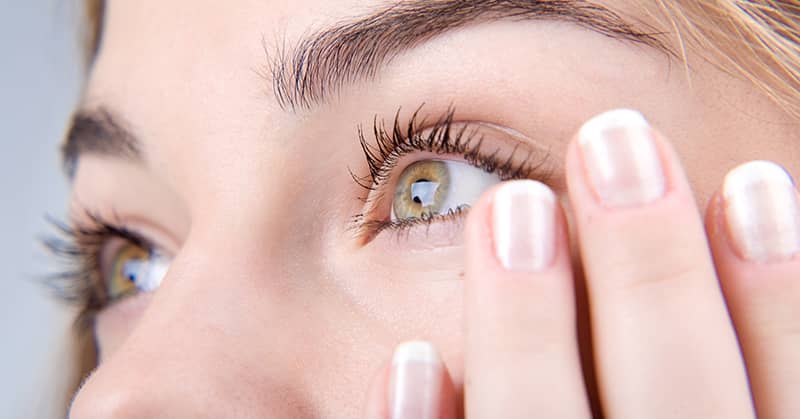
What if the key to detecting Alzheimer’s disease was hidden in plain sight—within your eyes? Emerging research suggests that a simple eye test could reveal signs of the disease years before symptoms appear. Scientists have discovered that biomarkers in the vitreous humor, a gel-like substance in the eye, could provide a safer, faster, and more accessible way to detect Alzheimer’s, potentially revolutionizing early diagnosis.
Key Takeaways
-
Eyes as a Diagnostic Tool – The vitreous humor, a gel-like substance in the eye, has been found to contain biomarkers linked to Alzheimer’s disease, potentially enabling earlier and less invasive detection.
-
Scientific Breakthroughs – Research has confirmed that key Alzheimer ’s-related proteins, such as total tau and ptau231, appear in eye fluid, correlating with brain pathology.
-
Future Potential – While more studies are needed, this discovery could revolutionize how doctors screen for Alzheimer’s and other neurodegenerative diseases, making early diagnosis more accessible and cost-effective.
The Evolving Role of Ophthalmologists
Prescribing lenses and detecting eye diseases will always remain the work of ophthalmologists. But they may take on an additional role in the future. That’s because the same abnormal proteins that show up in Alzheimer’s disease can also be found in fluid in the eye. In fact, taking a sample of eye fluid is quicker, cheaper, and safer than many other existing tests to detect Alzheimer’s and other neurological diseases well before symptoms appear.
Current Challenges in Alzheimer’s Diagnosis
Alzheimer’s disease can’t be officially diagnosed until death, which is of little use to the living. So, if the disease is suspected, doctors can look for abnormal proteins in the brain or cerebrospinal fluid of living patients. This can be done through a brain scan or a lumbar puncture (spinal tap), both of which are reasonably accurate indicators. However, these tests are time-consuming and expensive and are only used to diagnose Alzheimer’s at an advanced stage. The latest research shows that a better alternative could be an analysis of the eyes.
What Your Eyes Reveal About Memory Loss
Eyes are extensions of the brain and share the same pre-birth development, so they may be a more practical target for looking for abnormalities. This is especially true as eyes may not only provide the opportunity for doctors to make a diagnosis of a disease but also indicate that trouble lies ahead before symptoms of Alzheimer’s disease appear. For example, changes found in the retina, retinal blood vessels, pupils, and tears have already been demonstrated to show up in the early stages of the disease.
Now, researchers from Boston Medical Center have found another area of the eye worthy of investigation. It’s a watery, gel-like substance that fills the space between the lens and the retina. It’s called the vitreous humor.
Vitreous Fluid Reflects Brain Pathology
The researchers first got a hint that vitreous humor could play an important role in early Alzheimer’s detection in work published in 2019 and 2020. In the first study, 80 patients had their cognition tested. There was a clear association between cognitive function and three Alzheimer’s biomarkers in the vitreous humor.
The second study included 77 men and women having eye surgery for a range of problems. Sixty-eight were cognitively healthy, while nine had mild or severe impairment. The researchers detected a marker called neurofilament light (NfL) in the vitreous humor samples of every patient. As we reported in 2021, NfL is a highly sensitive and very accurate blood marker for the early detection of neurodegenerative diseases. A higher level of this marker in the patients was also associated with higher levels of beta-amyloid and total tau deposits in the vitreous humor. These studies were the first to show that vitreous fluid reflects pathological changes in the brain.
In a follow-up study published in the Journal of Alzheimer's Disease in May 2023, the Boston team looked for further confirmation of the importance of biomarkers found in the eye fluid.
Link to Alzheimer’s Confirmed
On this occasion, researchers used donated postmortem eyes and corresponding brains from 41 people with pathologically confirmed Alzheimer's and another neurological disease called Chronic Traumatic Encephalopathy (CTE). This results from repetitive head injuries that most usually occur in those taking part in high-impact professional sports like boxing and football.
Findings showed that levels of total tau and another tau marker called ptau231 in vitreous humor were significantly increased in both conditions relative to controls.
Senior author and associate professor in ophthalmology Manju Subramanian, M.D. said, “To our knowledge, this is the first study to investigate the role of vitreous fluid biomarkers and link it to confirmed post-mortem brain tissue pathological examination of Alzheimer’s disease. In addition, this is the first study to find a link between vitreous fluid biomarkers and confirmed CTE.
“Our findings provide further evidence to support the potential role of vitreous biomarkers in early diagnosis and prognostication of diseases like Alzheimer’s and CTE.”
My Takeaway
While the research is still in its infancy and more studies are needed before the vitreous fluid test can reach prime time, the findings are promising. One day, I do not doubt that doctors will be able to routinely diagnose early Alzheimer’s disease through simple screening tests such as this.
Summary
Groundbreaking research suggests that the eyes could provide an early warning system for Alzheimer’s disease. Scientists have found that the vitreous humor, a gel-like substance in the eye, contains key biomarkers associated with Alzheimer’s and other neurodegenerative conditions. This discovery could lead to a faster, safer, and more cost-effective way to detect the disease long before symptoms appear. While further studies are needed, these findings open the door to a future where a simple eye test could revolutionize Alzheimer’s diagnosis and improve early intervention strategies.
Frequently Asked Questions
How can the eyes help detect Alzheimer’s disease?
Researchers have found that the vitreous humor in the eye contains biomarkers associated with Alzheimer’s, potentially allowing for early diagnosis through eye fluid analysis.
What are the key biomarkers found in eye fluid?
Proteins such as total tau and ptau231, which are linked to Alzheimer’s and other neurodegenerative diseases, have been detected in vitreous humor samples.
Is this method currently available for Alzheimer’s diagnosis?
Not yet—while promising, this research is still in its early stages, and more studies are needed before eye fluid analysis becomes a standard diagnostic tool.
How does this method compare to traditional Alzheimer’s tests?
Compared to brain scans and spinal taps, testing eye fluid is quicker, safer, and more cost-effective, making it a potentially revolutionary approach to early detection.
What other diseases could be detected through eye fluid analysis?
In addition to Alzheimer’s, researchers believe this method could help detect Chronic Traumatic Encephalopathy (CTE) and other neurodegenerative conditions.
- Wright, L. M., Stein, T. D., Jun, G., Chung, J., McConnell, K., Fiorello, M., Siegel, N., Ness, S., Xia, W., Turner, K. L., & Subramanian, M. L. (2019). Association of Cognitive Function with Amyloid-β and Tau Proteins in the Vitreous Humor. Journal of Alzheimer's disease : JAD, 68(4), 1429–1438.
- Subramanian, M. L., Vig, V., Chung, J., Fiorello, M. G., Xia, W., Zetterberg, H., Blennow, K., Zetterberg, M., Shareef, F., Siegel, N. H., Ness, S., Jun, G. R., & Stein, T. D. (2020). Neurofilament light chain in the vitreous humor of the eye. Alzheimer's research & therapy, 12(1), 111.
- Vig, V., Garg, I., Tuz-Zahra, F., Xu, J., Tripodis, Y., Nicks, R., Xia, W., Alvarez, V. E., Alosco, M. L., Stein, T. D., & Subramanian, M. L. (2023). Vitreous Humor Biomarkers Reflect Pathological Changes in the Brain for Alzheimer's Disease and Chronic Traumatic Encephalopathy. Journal of Alzheimer's disease : JAD, 93(3), 1181–1193.
- Boston Medical Center. (2023, June 16). Significant correlation found between vitreous humor biomarkers and Alzheimer’s disease. Boston Medical Center.
